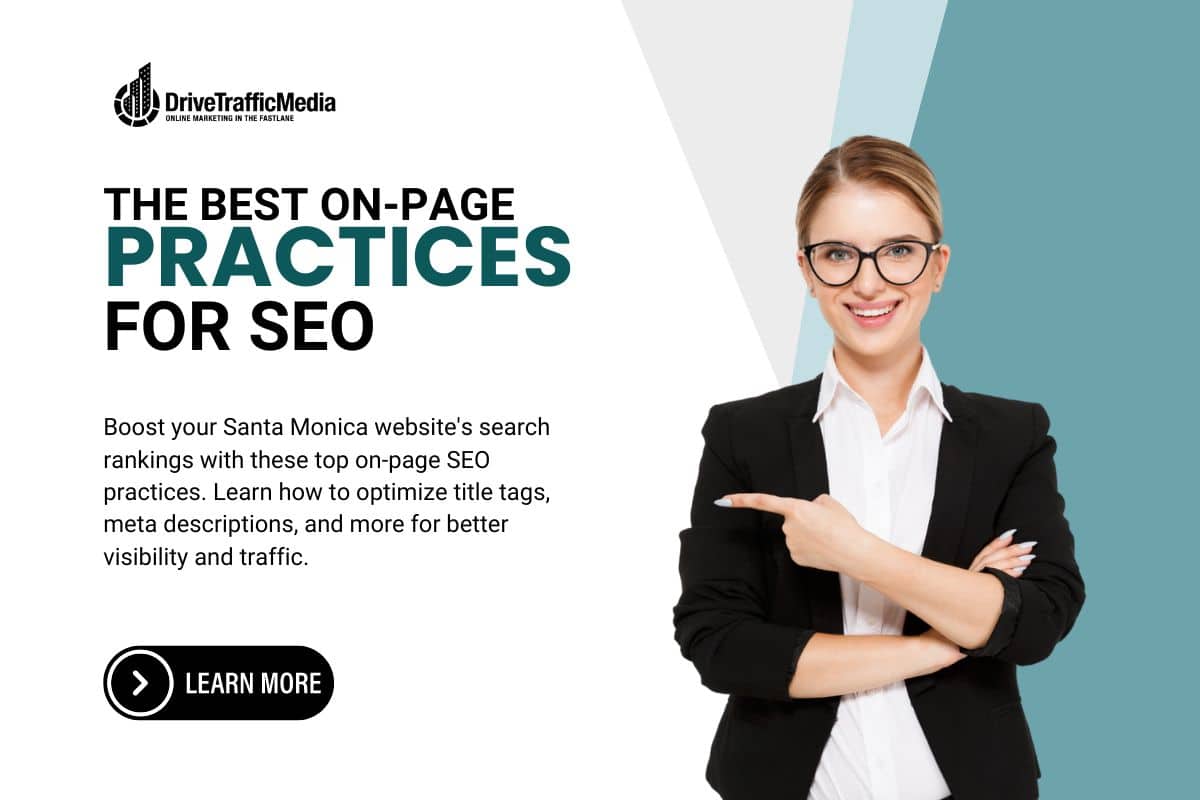Optimizing your Santa Monica website for search engines requires a multifaceted approach, with on-page SEO being a critical component. On-page SEO in Santa Monica involves optimizing individual web pages to rank higher and earn more relevant traffic from search engines. Here are the best on-page SEO practices to enhance your website’s performance:
Title Tags Optimization
The title tag is one of the most important on-page SEO elements. Ensure each page on your Santa Monica website has a unique, descriptive, and keyword-rich title tag. Keep it under 60 characters to ensure it displays fully in search engine results. Place the primary keyword at the beginning of the title for maximum impact.
Meta Descriptions
Meta descriptions provide a webpage summary and appear below the title tag in search results. Write compelling and concise meta descriptions (up to 160 characters) with relevant keywords. While meta descriptions don’t directly impact rankings, they can influence click-through rates.
URL Structure
Create clean, concise, and keyword-rich URLs. Avoid long, complex URLs with unnecessary parameters and numbers. Use hyphens to separate words and make URLs easily readable for users and search engines. For example, use www.example.com/seo-tips rather than www.example.com/p=1234.
Header Tags (H1, H2, H3, etc.)
Use header tags to structure your valuable content hierarchically. The H1 tag should have inclusion with the primary keyword and accurately describe the page’s content. Use H2, H3, and other subheaders to organize the content into sections, making it swifter for readers and search engines to grasp the context and flow of the content.
Keyword Placement
Strategically place primary and secondary keywords throughout your content. Please include them in the first 100 words, in headers, and naturally throughout the text. Avoid keyword stuffing, which can lead to penalties. Focus on creating valuable and informative Santa Monica SEO content that naturally incorporates keywords.
Content Quality
High-quality content is crucial for on-page SEO. Ensure your content is original, informative, and valuable to your audience—address users’ search intent by providing thorough answers and solutions. Use a mix of text, images, videos, and infographics to enrich the content and make it more engaging.
Internal Linking
Internal linking helps search engines comprehend the structure of your website and establishes a hierarchy of importance—link to relevant pages within your site to improve navigation and distribute page authority. Use descriptive anchor text that includes relevant keywords to provide context.
Image Optimization
Optimize images by superbly reducing their file size without compromising quality to hugely improve page load speed. Use descriptive file names and add in some alt text with relevant keywords. Alt text helps search engines understand and comprehend the content of images and improves accessibility for users with visual impairments.
Mobile-Friendliness
Ensure your Santa Monica website is responsive and provides a seamless experience across all devices. Mobile-friendliness is a super crucial ranking factor, as more people access the web via mobile devices. Use Google’s Mobile-Friendly Test to check your site’s compatibility.
Page Load Speed
Page load speed indubitably impacts user experience and search rankings. Optimize your website’s speed by compressing images, leveraging browser caching, and minimizing JavaScript and CSS files. Use tools like Google PageSpeed Insights to identify and fix speed issues.
User Experience (UX)
A positive user experience encourages longer visit durations and reduces bounce rates. Ensure your website is easy to navigate, with clear calls-to-action, intuitive menus, and a clean layout. Providing a seamless and flawless user experience can indirectly boost your SEO performance.
Schema Markup
Implement schema markup (structured data) to assist the search engines better grasp your content and improve how your page is represented in SERPs. Schema markup can enhance search results with rich snippets, increasing click-through rates.
Conclusion
Adhering to these on-page SEO best practices can significantly enhance your website’s visibility and performance in search engine results. By focusing on title tags, meta descriptions, URL structure, header tags, keyword placement, content quality, internal linking, image optimization, mobile-friendliness, page load speed, user experience, and schema markup, you can create a well-optimized website that attracts and retains visitors, ultimately leading to better search engine rankings and increased organic traffic.





